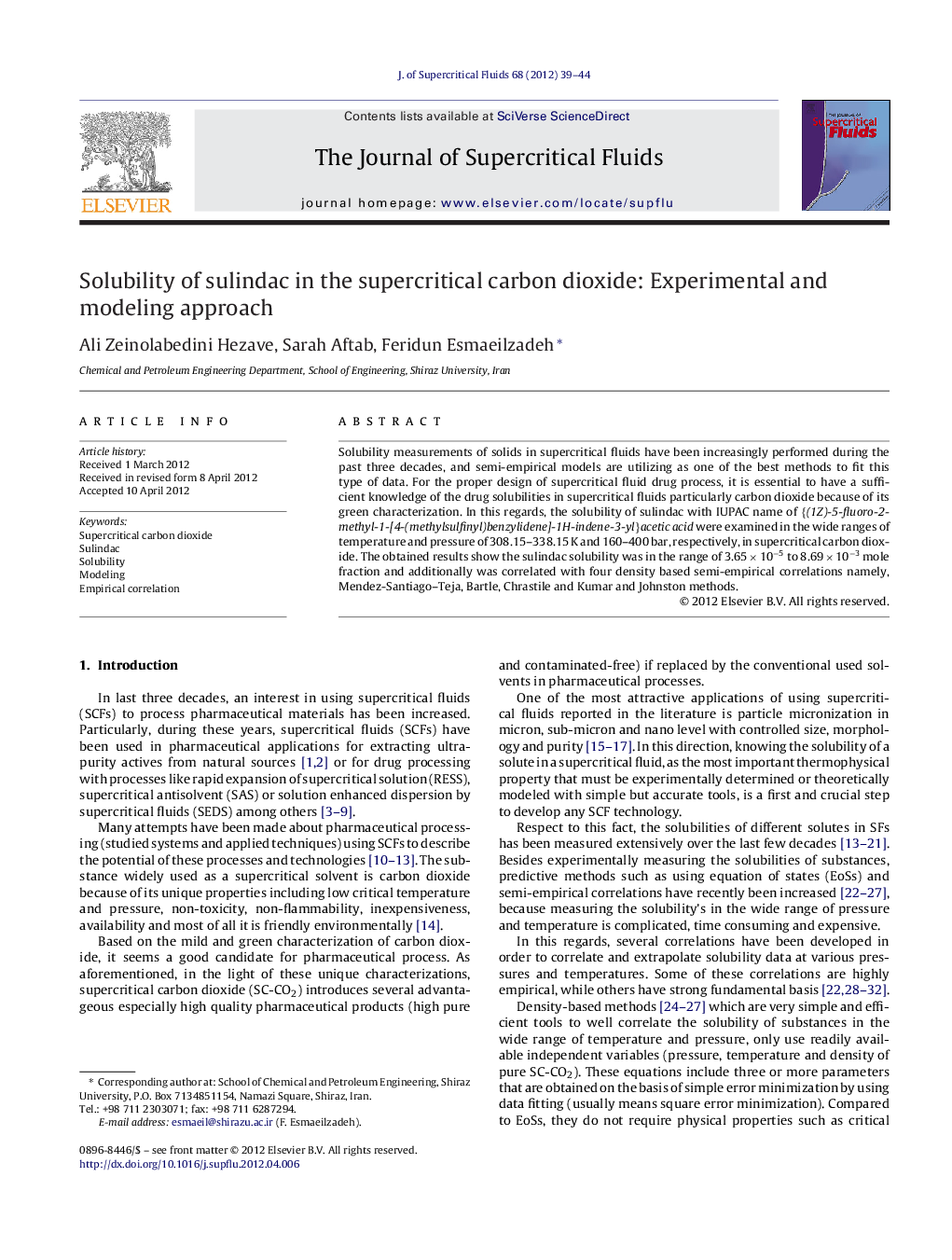| Article ID | Journal | Published Year | Pages | File Type |
|---|---|---|---|---|
| 230925 | The Journal of Supercritical Fluids | 2012 | 6 Pages |
Solubility measurements of solids in supercritical fluids have been increasingly performed during the past three decades, and semi-empirical models are utilizing as one of the best methods to fit this type of data. For the proper design of supercritical fluid drug process, it is essential to have a sufficient knowledge of the drug solubilities in supercritical fluids particularly carbon dioxide because of its green characterization. In this regards, the solubility of sulindac with IUPAC name of {(1Z)-5-fluoro-2-methyl-1-[4-(methylsulfinyl)benzylidene]-1H-indene-3-yl}acetic acid were examined in the wide ranges of temperature and pressure of 308.15–338.15 K and 160–400 bar, respectively, in supercritical carbon dioxide. The obtained results show the sulindac solubility was in the range of 3.65 × 10−5 to 8.69 × 10−3 mole fraction and additionally was correlated with four density based semi-empirical correlations namely, Mendez-Santiago–Teja, Bartle, Chrastile and Kumar and Johnston methods.
Graphical abstractFigure optionsDownload full-size imageDownload as PowerPoint slideHighlights► Sulindac solubility in SC-CO2 at different temperatures and pressures was examined. ► Sulindac solubility was in the range of 3.65 × 10−5 and 8.69 × 10−3 mole fraction. ► Four density based correlations namely, MST, Bartle, Chrastile and K–J were used. ► Used correlations showed good level of prediction accuracy for engineering purposes.
